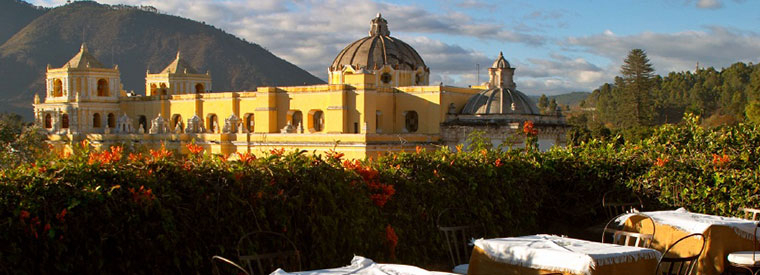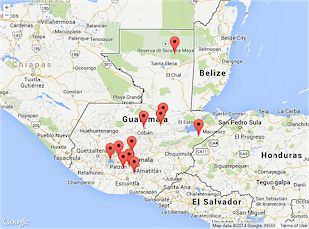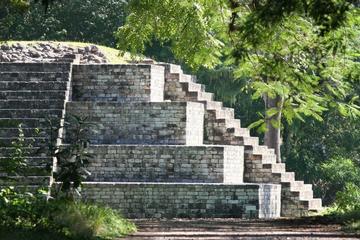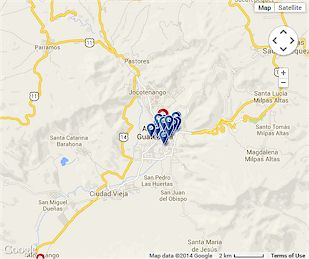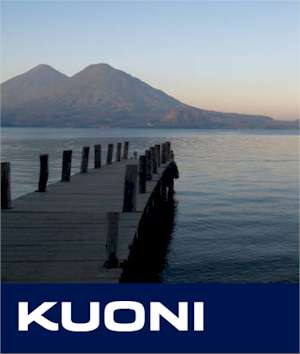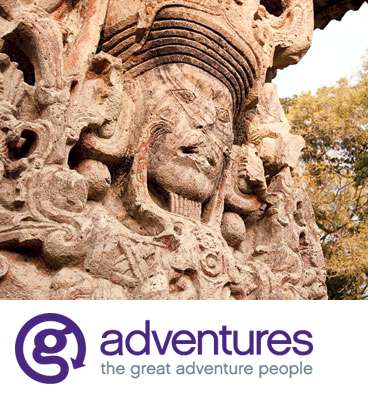« GUATEMALA • DISCOVER GUATEMALA • Antigua Guatemala
Destination Antigua Guatemala

Between the ruins, the nice weather, and the volcanoes Fuego, Acatenango, and Agua, Antigua has plenty to keep each and every gringo busy. Take an morning stroll, learn Spanish with a local, or explore some of the majestic ruins among the cobblestone streets. There is much to love about Antigua.
• Destination Antigua Guatemala
A | B | C | D | E | F | G | H | I | J | K | L | M | N | O | P | Q | R | S | T | U | V | W | X | Y | Z
» Acatenango
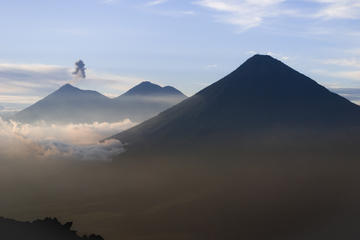
Guatemala’s Pacaya is one of the most popular volcanoes to visit, but travelers shouldn't skip its neighbor, Acatenango. Towering nearly 13,123 feet (4,000 meters), it is Guatemala’s third-tallest volcano and one of the tallest stratovolcanoes in Central America. Acatenango’s first eruption was in 1924 —relatively recent in comparison to many other volcanoes—though some evidence of its volcanic activity dates back to prehistoric times. Other eruptions occurred shortly after …
» Biotopo del Quetzal
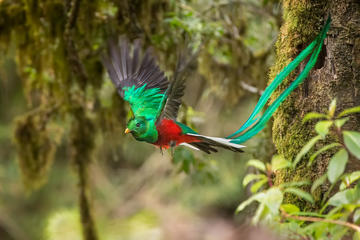
The Biotopo Mario Dary Rivera Nature Reserve, commonly referred to as Biotopo del Quetzal, is one of Guatemala’s best nature sites. It gets its name from the country’s national bird, the endangered Quetzal, which has found a home within the sanctuary. Quetzals are rather elusive within Biotopo del Quetzal, but they are sometimes spotted near local restaurants, as they prefer to feast on avocado-like fruits from neighboring aguacatillo trees …
» Cathedral of San Francisco (Iglesia de San Francisco)
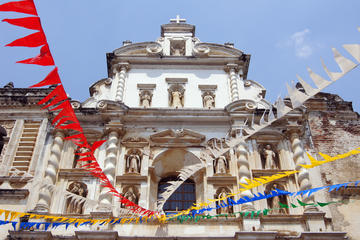
Originally constructed in the 1500s, Iglesia de San Francisco, today, has mostly been reconstructed, thanks to age and earthquake damage. However, that's not the draw to this attraction. Both locals and visitors come to this old, baroque church to visit the shrine of Peter of Saint Joseph Betancur (Santo Hermano Pedro de San Jose de Betancurt). A Franciscan monk, he founded a hospital for the poor in town and is the country's most honored Christian leader …
» Cerro de la Cruz
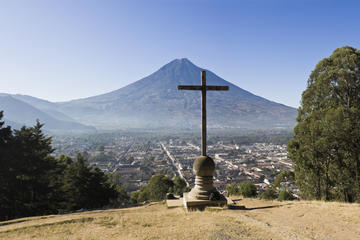
The Hill of the Cross, or Cerro de la Cruz, is a 30-minute walk that, upon arrival, treats its guests to expansive views of Antigua and the Volcan de Agua. While this walk is not easy, it is worth it. For those who prefer to skip the hike, cabs can whisk people to the top as well. Located on the north side of the city, it offers the best views of Antigua. And an enormous stone cross …
» Iximché
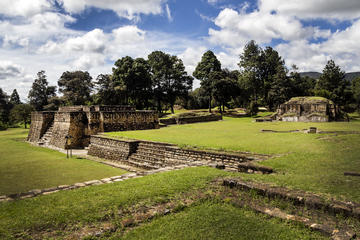
Located in the Western Highlands of Guatemala, the pre-Columbian Mesoamerican site of Iximche was the capital of the late post-classic Kaqchikel Maya kingdom from 1470 until it was ultimately abandoned in 1524 and then declared a Guatemalan National Monument in the 1960s. Once in the archeological site, you will see four ceremonial plazas surrounded by tall temples and two ball courts. There is also a small museum displaying sculptures and ceramics found at Iximche during excavations …
» Jade Museum (Museo del Jade)
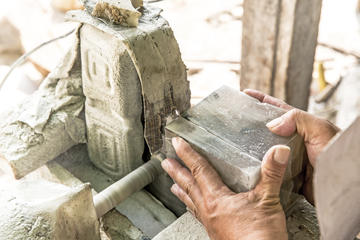
Jade is a rare and precious stone dating back to the pre-Columbian era in Mesoamerica. Some of the world’s best jade was found in Guatemala. Historically, it was used in culturally significant ways, including in hieroglyph inscriptions and carvings of symbolic figures. There are two types of jade — Jadeite and Nephrite. Jadeite is more dense and renowned for its rich colors. Nephrite is more of a carving stone, found in many places around the world …
» Lake Atitlan
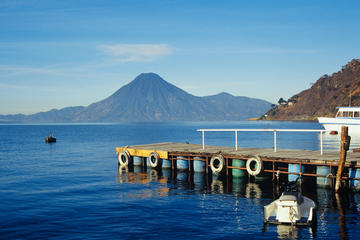
Considered to be one of the most beautiful lakes in the world, Lake Atitlán, located in the Guatemalan Highlands, is the deepest lake in Central America and surrounded by three volcanoes. Created from a volcano (the lake fills a caldera which erupted more than 84,000 years ago!), the fertile ground around the lake is home to numerous agriculture, including coffee and corn. Aside from just taking in the breathtaking beauty of the lake, other options to enjoy this slice of nature include eco-adventures …
» La Merced Cathedral
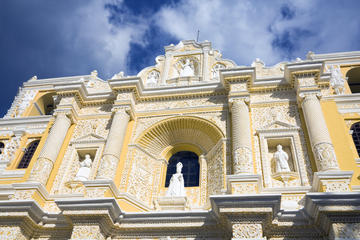
This gorgeous Baroque-style church features a soft, buttery yellow exterior complimented by white trim. Originally a male monastery, La Merced was originally built in 1548. Later, in 1749, Juan de Dios began work on building today's church, finishing the project in 1767. The exterior of the intricately designed church features sculptures and paintings, such as the well-known Jesus Nazareno. Inside, ruins of the monastery can be found, including the Fuente de Pescados …
» Lanquin Caves
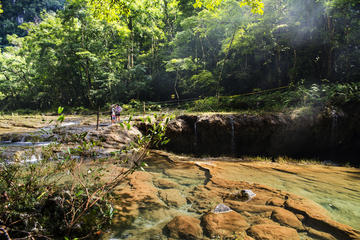
The Grutas de Lanquin, or Lanquin Caves, are limestone caves near the city of Cobán that were once considered sacred to the Mayan people, believed to be the "heart of heaven." The Mayans believed the "secret of the ages" was hidden deep inside the caves. Today, they are a popular tourist destination, although some locals still utilize the caves in the manner of their ancestors. Travelers, on the other hand, come to explore the caves’ beauty, learn about their history …
» Mixco Viejo
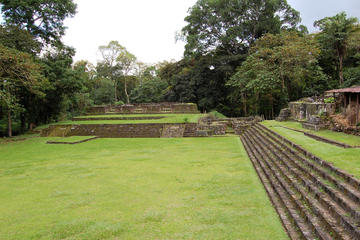
Mixco Viejo is an archaeological site that dates back to the postclassic Mayan civilization. There are two areas with the name Mixco Viejo, as the former Chajoma Kaqchikel kingdom was mistakenly linked to the postclassic Poqomam capital as a result of confusion interpreting the colonial records. To properly distinguish between the two today, the former Poqomam capital is called Mixco Viejo (Chinaulta Viejo), while the Kaqchikel capital is known as Mixco Viejo (Jilotepeque Viejo) …
» Pacaya Volcano
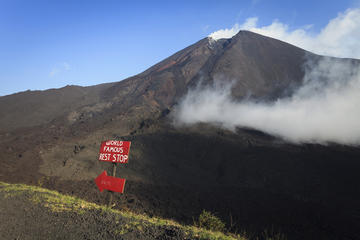
Pacaya Volcano is considered Guatemala’s most active volcano and is believed to have first erupted approximately 23,000 years ago. Pacaya has erupted a number of times since and has had an active status since 1965. It stands at more than 8,300 feet (2.5 km) at its tallest point and is part of the Central American Volcanic Arc. One of the most notable eruptions was in 2010, when Pacaya erupted multiple times in one day, raining ash on a number of towns …
» Palacio del Ayuntamiento
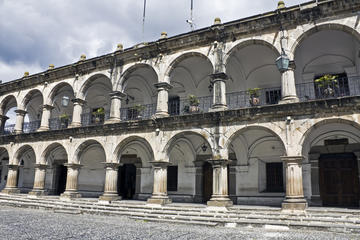
The Palace of the City Council (Town Hall), or El Palacio del Ayuntamiento, was constructed in 1743 and once served as the Spanish colonial government seat and an 80-person jail during the colonial era. Today, it is home to Antigua’s municipalidad, or city government, the Museo del Libro and the Museo de Santiago. One of the most impressive elements of the Palacio del Ayuntamiento is its two-story façade. The double layer of stone archways with columns was done in a Tuscan style …
» Parque Central
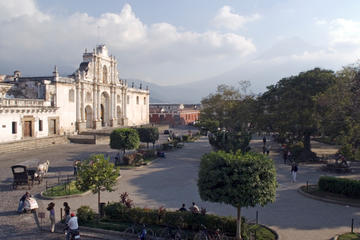
Located in the center of Antigua, Parque Central is the major outdoor area in the town. Considered one of the most beautiful in the country, the park is the place where people meet up for an afternoon of relaxation and nice weather. By day, vendors line the tree-covered walks, selling their wares. By night, mariachi or marimba bands set up shop, entertaining passersby with their live music. Be sure to check out the fountain, which was originally created in 1738 …
» Quirigua
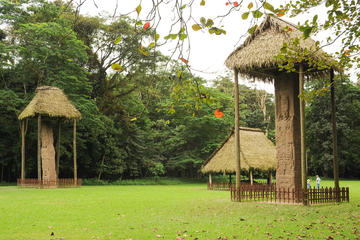
Quiriguá is an ancient Mayan site in southeastern Guatemala. Although it’s considered a small Mayan city, it is without a doubt one of the most important. It was here that the tallest stela from the Maya world was discovered. The monolithic stone stands 35 feet high (10.6 meters), 5 feet (1.5 meters) wide and 5 feet (1.5 meters) thick, weighing over 60 tons (53.6 long tons). A UNESCO World Heritage site, Quiriguá once controlled the jade and obsidian trade route …
» Santa Catalina Arch
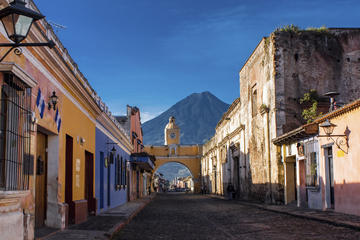
The Santa Catalina Arch is one of the most iconic structures in Antigua. Arco de Santa Catalina in Spanish, the notable arch is located on Fifth Avenue North and was built in the 17th century to connect the Santa Catalina convent to a school. This allowed the cloistered nuns to pass between buildings without ever having to enter the street and come into contact with the general public, thereby violating the strict laws regarding seclusion …
» Semuc Champey
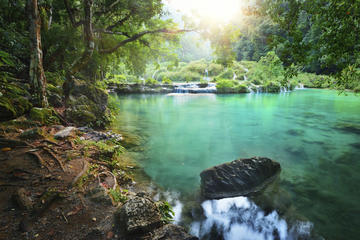
Tranquil, tiered turquoise pools suspended over limestone are what you can expect to find when visiting Semuc Champey. A natural limestone bridge supports the pools, which change shades of turquoise due to climatic variations throughout the year. Semuc Champey is one of Guatemala’s best-kept secrets—one that is quickly getting out. Its remote location was often bypassed for more popular and certainly more accessible destinations and sights in the country …
» Tikal Ruins
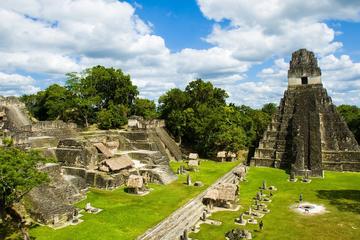
Located in El Peten, Tikal is the crown jewel of Mayan ruins in Guatemala. Though it has many of the same beautiful temples as its well-known counterparts in Mexico, Tikal stands apart because of its location deep in the jungle. Trekking like Indiana Jones is not necessary, but the jungle setting is evident as you walk under a thick canopy to explore the plazas, pyramids, and temples of Tikal. Settled around 700 BC, Tikal flourished during the Classic Period, between 200 and 900 AD …

« GUATEMALA • DISCOVER GUATEMALA • Antigua Guatemala


